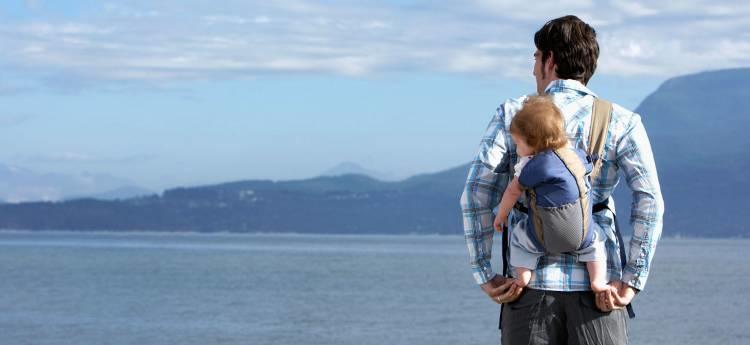Baby carriers provide a great way for moms and dads alike to keep their baby close to them while leaving their hands free to do other things. It has been shown that keeping your baby close to you is good for the baby’s development, but using a carrier isn’t always the best for your back.
Using a baby carrier is all but necessary, but the type of carrier you use is an important talking point, especially when it comes to back pain. There are a variety of different baby carriers available, and each one can affect your back differently. It is important to choose the proper model to prevent back and spine issues like chronic pain or degenerative disc disease.
The Types of Baby Carriers Available
Wraps
Wraps are composed of a single piece of fabric that is tied around both the baby and the carrier. These are very simple in design, and they can be used to carry a child in a number of different positions. This means you can also choose a position that is healthier and more comfortable for your back. Wraps come in both stretchy and woven fabrics, allowing you to choose a style that fits your style and carrying preferences.
However, these products do come with a learning curve. It can be difficult at first to figure out the best way to wrap the child, and it can take some practice to begin the wrapping process while holding them. Wraps also require the carrier to tie knots, which isn’t for everyone.
Ring Slings
Ring slings use a single piece of fabric like the wrap design does, but they also include a set of two rings that the fabric is threaded through. This allows the carrier to be easily tightened and loosened. These slings are easy to put on, take off, and adjust. The one-shouldered design also makes nursing easy.
But, this one-shoulder design can also cause back issues, especially if you use it for longer periods of time. One shoulder will take much more pressure, which can result in chronic pain in the back, shoulders, or neck. This design can also force one shoulder to drop lower, causing the upper spine to bend. This can cause other issues or muscle compensations.
Meh Dai
Meh dai carriers are also made out of fabric, but they include four fabric straps coming off a rectangular section. This allows the carrier to adjusted to any position, and there are not buckles to make wearing it uncomfortable. The four-strap design also allows for even weight distribution across both shoulders, helping to reduce the chance for back injuries.
You do have to tie knots in order to use this carrier, which can take some practice to ensure they are secure. If your child likes to get into and out of the carrier often, this design can also be more time intensive.
Soft Structured Carriers
Soft structured carriers are similar to meh dai models, but they utilize buckles or clips for fastening instead. This design is also one of the healthier options as far as spine health is concerned. The buckles make them easier to use, especially if you put them on and take them off often. These products also usually include padding, which can make carrying more comfortable.
However, the extra padding makes these products a bit bulkier, so they don’t pack down as easily and can’t fit as well in diaper bags. The fastening buckles can also cause some discomfort if they rub on or dig into certain spots.
Baby Backpacks
Baby backpacks are the most heavy-duty design available, and these products are great for long distance carrying. They utilize a more supportive frame and have shoulder straps similar to a regular backpack. Hip straps are often included as well, helping to relieve some of the pressure from your spine.
These products are generally much heavier and bulkier, which can make storage and transportation more difficult. The additional weight, combined with the fact that the baby often sits a bit farther away from your back compared to other models, could cause back pain as well.
Tips on Saving your Back with a Baby Carrier
As a general rule of thumb, having a carrier that distributes weight equally on both shoulders is the healthiest option for your spine. This prevents spine bending and can lower the risk of developing neck problems. Finding a carrier with hip straps is also helpful as they can reduce the pressure on the shoulders and balance the weight more evenly.
Also, you should try to carry your child as high up on your back and as close to your body as possible. Front carrying a baby too low or farther away from your body can cause your shoulders to pull forwards, straining your upper back and neck, and back carrying too low can cause your lower spine to arch too far back.
Both of these issues can place unnecessary strain on your spine and muscles, and can cause more severe back problems like degenerative disc disease. In general, back carrying is a healthier option for your back compared to front carrying, especially as the child becomes heavier.
